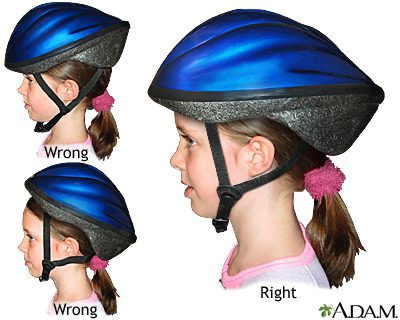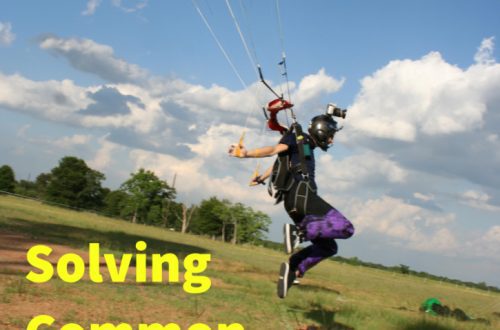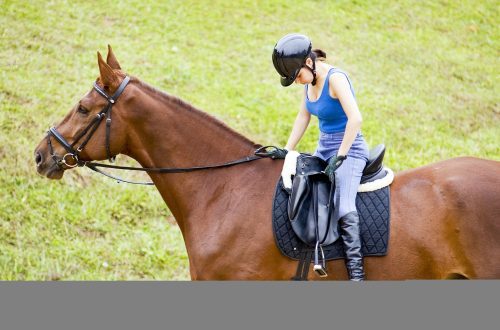
Janet Foy talks about shoulder-in exercise
Janet Foy is an American International Judge and a member of the International Dressage Committee. She often conducts workshops and seminars around the world both for working with riders and for training other judges. In addition, Janet is the author dressagetoday.com, she writes interesting articles covering horse training, judging and more.
One of the most effective exercises for improving the contact, flexibility, and balance of the horse is the shoulder-in. Usually in riding, the shoulder is performed at a trot, but in training it can be done at a walk and canter. Janet Foy explained the effectiveness of this exercise.
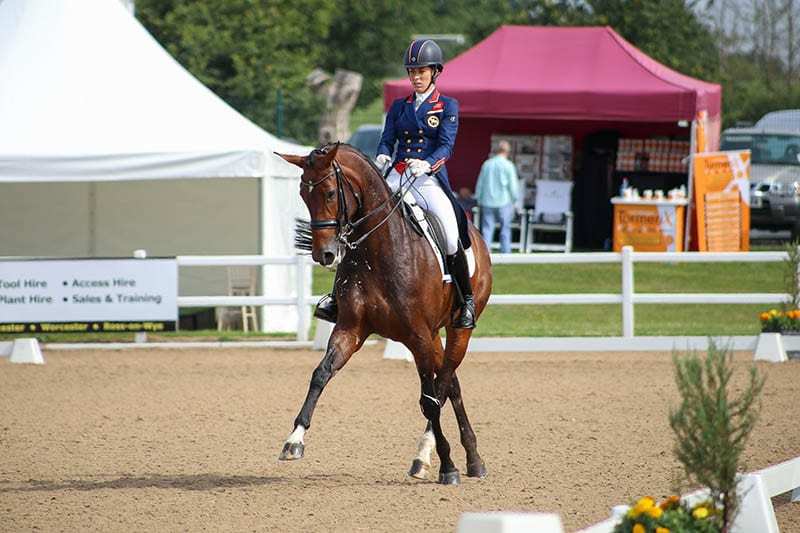
Фото: Hereford Equestrian
According to Janet, the exercise “shoulder in” has many advantages, here are some of them:
1.Development of flexibility;
2.Development of straightness;
3.Bringing the horse to the movement in the collection.
Correct execution exercises “shoulder in” at the trot it looks like this: the horse’s hind legs move strictly in one line, the shoulders move inward, the movement is clearly in three tracks. The angle (approximately 30 degrees) of shoulder abduction should be well marked. As a line of movement, you can use the middle line or the quarter line of the arena, or you can be guided by the classic version of the shoulder along the side. The essence of the exercise in that it is done in a collected trot, the horse moves with a slight, constant bend around the rider’s inside leg without breaking the rhythm or changing trajectory.
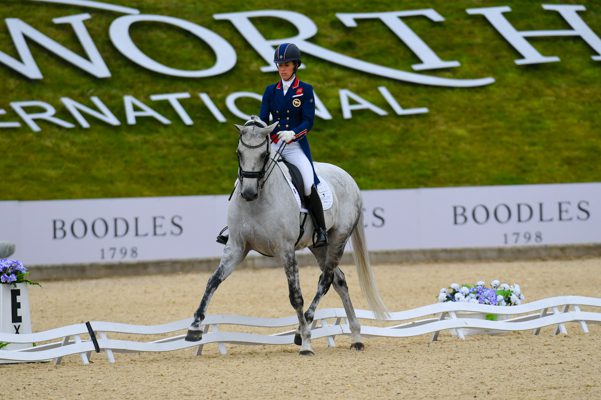
Photo: Horse & Hound
By bending the horse around the inside leg, the rider helps him get the inside hind leg under the body better, which is very important when moving in collection. The collected trot requires a free and easy reach of the horse’s shoulders, shoulder-in exercises help to develop and improve these abilities.
“The most common mistake I see is changing the angle of shoulder abduction during movement. Another mistake is for the rider to bring the horse’s shoulders inward and his head outward. In addition, there are shortcomings when performing the shoulder not along the arena wall: you can notice how the horse’s hind legs move outward (towards the wall), this leads to a loss of flexion and movement in four tracks (correctly three tracks),” said Janet .
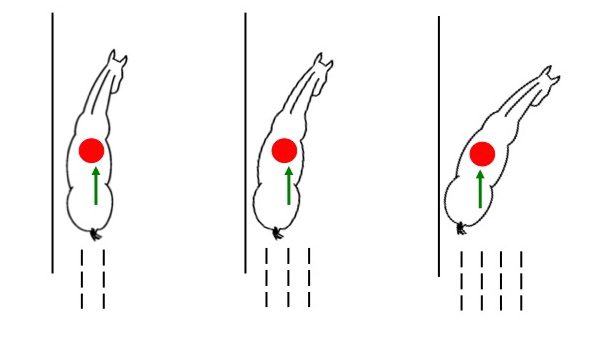
Photo: paardenbegrijpen.nl/ two-track, three-track and four-track movement.
How to do exercise “shoulder in”. Execution rules.
“Learning to do exercise “shoulder in” better on a horse that is relaxed, able to move with a clear rhythm, momentum and steady contact. Before starting the exercise, make sure your horse is responding to the aids and especially to the legs. The horse must be able to bend correctly on a ten-meter volt.
1. Make sure your horse bends easily. To do this, you can do a few 10-meter volts or bend in the corners.
2. Beginning of the exercise: take the shoulders and neck away from the wall with the inside rein, move the horse to the outside rein with the inside leg and help him bring the inside leg under the body. Use your outside leg to control the horse’s hind legs so they don’t move outward.
3. Watch your center of gravity. You should sit upright (centered). Remember, the horse reacts to the slightest movement of the body. If you lean too hard on the inside leg, the horse will follow in its direction (away from the arena wall).
4. Slightly turn your shoulders and hips inward, they should be parallel to the horse’s shoulders.
5. Do not move for a long time shoulder inward. If you started doing the exercise on the wall, then finish it before the corner with the help of the inside leg: “There is not a single ride in which
exercise “shoulder in” runs more than 30 meters along the long wall.
Janet talked about how she teaches horses to do exercise “shoulder in”: “I don’t start shoulder-inward from a corner or a volt. An inexperienced horse will think that you want to repeat the circle or go on a diagonal. I prefer to train the horse to respond to the leg and move away from it. I like to move from simple exercises to complex ones.
You can do the exercise at a medium walk, and later at a working trot. Start by yielding your leg from the centerline: ride into the centerline from A, transfer your weight to your left foot and move to the right to B. Use your inside leg to prompt the horse to go to the side. As soon as you reach the quarter line of the arena, begin to bend the horse to the left, and already on the wall, pull your shoulders in. The wall will restrict the outward movement of the hind legs, and you will get proper flexion around the inside leg.
Photo Shoot: dressagetoday.com
Once the horse understands what you want from him, you can move to the shoulder-in from a ten-meter circle or from the corner of the arena. Do not keep the horse on this exercise for a long time: it is better to do little, but with high quality and praise, than to ride the entire long wall incorrectly and punish.



